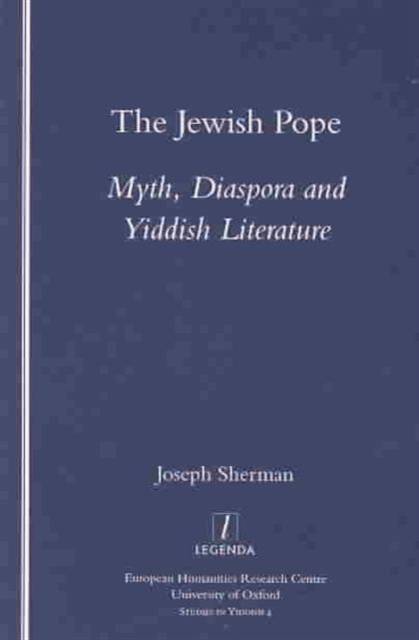
- Afhalen na 1 uur in een winkel met voorraad
- Gratis thuislevering in België vanaf € 30
- Ruim aanbod met 7 miljoen producten
- Afhalen na 1 uur in een winkel met voorraad
- Gratis thuislevering in België vanaf € 30
- Ruim aanbod met 7 miljoen producten
Zoeken
Omschrijving
To what extent do Yiddish language and literature derive from the dominant values of mainstream European culture? How far did this culture shape the self-perception of Yiddish-speaking Jews of Central and Eastern Europe? How far did the ambivalent, antagonistic attitude adopted towards Jews over many centuries in Christian Europe shape modern Jewish identity and culture? Sherman deals with such questions in his close examination of the recurring treatment of the myth of the Jewish Pope in four Yiddish literary texts dating from between 1602 and 1943. The roots of this myth - that one day a Jewish apostate might come to rule the world as Pope - lie deep in the Biblical story of the assimilation of Joseph (Genesis 37-50), from which it branches out into numerous Messianic fantasies informing Jewish existence through two thousand years of exile. Concerned with broader questions of cultural identity, this study should be of interest to a general readership.
Specificaties
Betrokkenen
- Auteur(s):
- Uitgeverij:
Inhoud
- Aantal bladzijden:
- 212
- Taal:
- Engels
- Reeks:
Eigenschappen
- Productcode (EAN):
- 9781900755771
- Verschijningsdatum:
- 1/11/2002
- Uitvoering:
- Paperback
- Formaat:
- Trade paperback (VS)
- Afmetingen:
- 140 mm x 215 mm
- Gewicht:
- 308 g

Alleen bij Standaard Boekhandel
+ 265 punten op je klantenkaart van Standaard Boekhandel
Beoordelingen
We publiceren alleen reviews die voldoen aan de voorwaarden voor reviews. Bekijk onze voorwaarden voor reviews.








